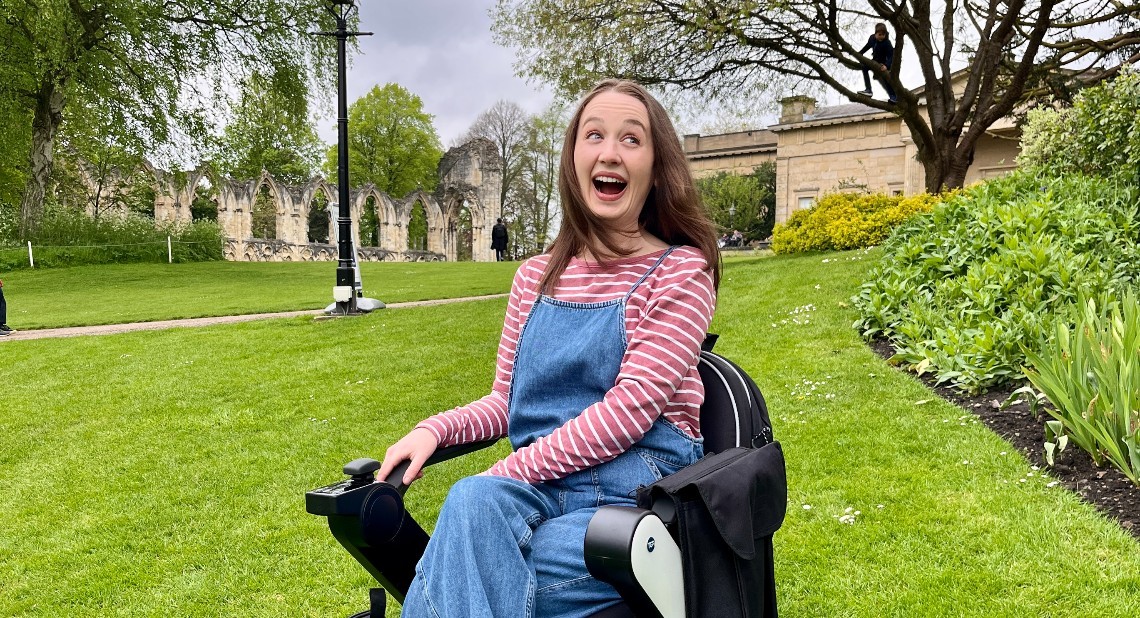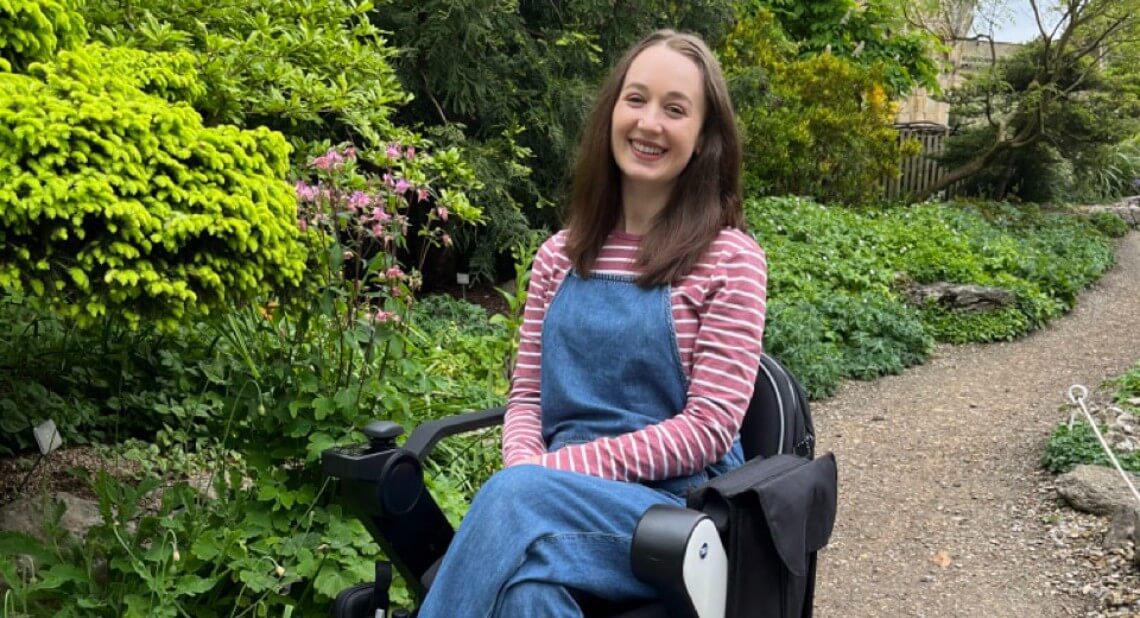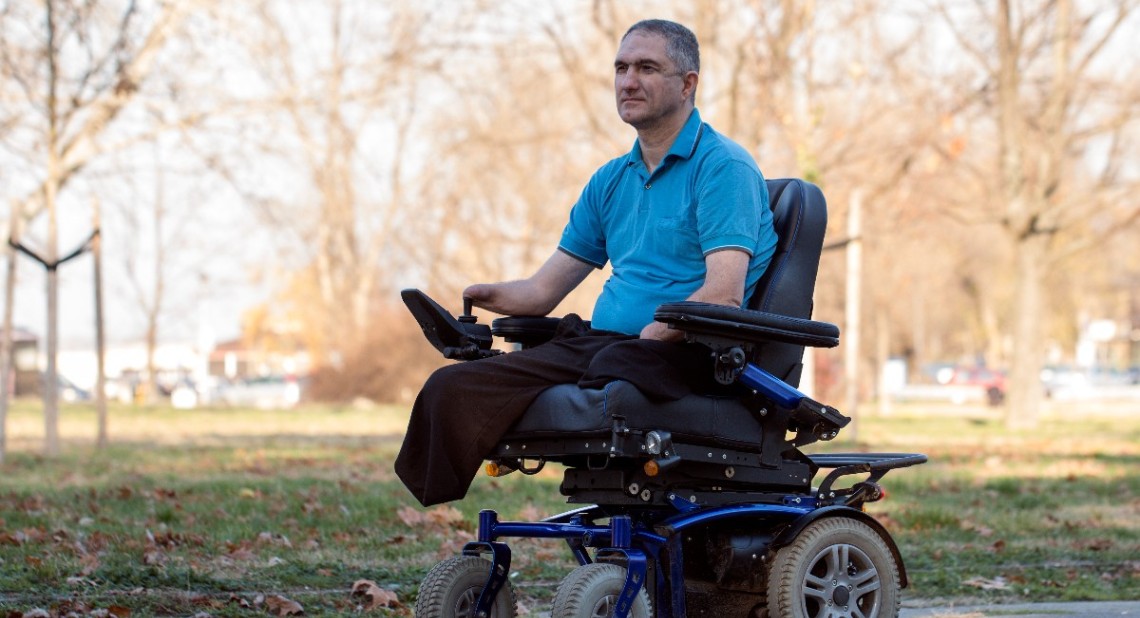Pippa Stacey, a disabled creative based in Yorkshire lives with chronic illness. She shares how her powered wheelchair has helped her overcome challenges and given her the freedom to explore the outdoors once again.
When I came into my chronic illness, my world initially became much smaller. Each day had to be carefully planned and paced, and for many years, opportunities to explore nature became much harder to navigate.
Though I still have to carefully pace my life, discovering mobility aids changed everything. I quickly learned that with the right wheelchair, I could engage with the things I enjoyed much more often and without needing anywhere near as much recovery time afterwards.
Even though I still often experience challenges, such as dealing with the stigma of being an ambulatory wheelchair user, and physical access barriers in the world around me, I’ve learned to get myself in nature and enjoy the benefits this brings to my overall wellbeing.
Start small
If you’re a new wheelchair user or managing an energy-limiting condition, it’s much better to build up slowly rather than throw yourself in at the deep end. Your time outdoors does not have to involve a Bear Grylls-style trek into the wilderness; even the smallest moments can bring you a huge sense of joy and fulfilment.
Many towns and cities across the UK have beautiful parks and green areas for visitors to enjoy. Historically, however, wheelchair users have had to contend with challenging terrain and a frustrating lack of level access simply to get from A to B.
Councils and communities are now paying much more attention to accessibility in public spaces. This includes thinking about how they can create wider pathways and smoother surfaces. It’s rare to find somewhere perfect, but some of my local favourites include Valley Gardens in Harrogate, an English Heritage Grade II Listed garden, and Rowntree Park in York.
Plan in advance
Planning a trip in advance helps you to enjoy more freedom and live more in the moment once you’re there. Here are some tips to help you get started:
-
Research places you’d love to visit in the future and check out their accessibility information. You should be able to find this on the venue’s website, or you could call them directly and speak to somebody in their team.
-
Look out for destinations that have made adjustments for wheelchair users, such as hard-surfaced walking trails and reduced-height viewing platforms.
-
Many places are now providing outdoor wheelchairs and off-road mobility aids for visitors to hire, such as Trampers. These are an amazing option for exploring in nature and easier to drive than you might expect!
-
Do not forget about your broader access needs, such as requiring a Changing Places toilet facility or assistive listening systems. I can highly recommend AccessAble’s Detailed Access Guides to filter options across the UK according to your unique access needs.
You may be surprised by what your research uncovers. I was thrilled to find out that Bempton Cliffs RSPB Nature Reserve, somewhere I’d often visited pre-disability, has become one of the most accessible seabird colonies in Europe. Get your timing right and you might even spot some wild puffins!
Consider adaptations to your wheelchair
If you are interested in adventure, you may be able to add things to your wheelchair to make it more suitable for outdoor use. The freewheel wheelchair attachment, for example, can be added to the front of manual chairs to give a smoother ride over rougher surfaces.
You could also consider products that have e-Fix wheels, like the Invacare Alber e-fix, or a light-drive add-on attached to the back of the chair, which will give you more power and remove some of the effort to move forward.
Each wheelchair model has lots of different features, so it’s important to do your research to decide which is right for you. Remember, the Motability Scheme can help you choose from a range of suitable options, including any adaptations you might need. They offer an all-inclusive lease package that includes insurance, breakdown cover, servicing, maintenance, and more. They can also help you find the right dealer among 100 Motability Scheme dealers across the UK.
Find out more about how to keep your powered wheelchair or scooter safe and secure.
Join group rambles
If you want to spend more time outdoors, but you’re unsure where to start, there are organisations like Disabled Ramblers that can provide incredible group experiences. They are experts in accessible hiking and regularly run guided rambles all over the country.
If you’d told me a few years prior that one day I’d be hiking through the forest and countryside around the iconic Roseberry Topping in Guisborough, I probably would not have believed you. My face hurt from smiling by the time I got home!
Upcoming excursions are listed on Disabled Ramblers’ website, and you could also look for similar activities via disability organisations in your local area. I’d recommend packing:
-
Lunch, snacks, and plenty to drink
-
Extra clothing and waterproofs (I highly recommend an insulated wheelchair cosy too)
-
Any necessary medication or medical aids to ensure you can manage your access needs and enjoy the experience
-
A phone or camera to capture photos of the beautiful sights you’ll see!
Pippa’s Experience
When my chronic illness was at its worst, I worried that I’d never be able to engage with nature the way I used to. I assumed I’d only be able to reintroduce the outdoors into my life again if I somehow experienced a full recovery, or if I was able to pursue an active hobby like cycling or hiking. I’m so glad to tell you that I was wrong.
Over the last few years, I’ve been able to spend more time in nature than I have for much of the last decade. Sometimes it’s using outdoor mobility aids to explore forest areas and countryside landscapes, sometimes it’s a drink with a friend in the outdoor seating of a café. Other times, it’s simply resting in the garden with the sun on my face. No matter how big or small, finding accessible ways to spend time in nature has made my world bigger and more vibrant, and hugely benefitted my physical and mental health too.
It’s important to recognise that energy-limiting conditions can severely impact a person’s ability to leave the house, and there’s still plenty of work that needs to be done to improve accessibility in the world around us. However, even enjoying a small moment out in nature can make a world of difference, and I really hope you are able to experience the benefits of it too.
Interested in joining the Scheme?
The Motability Scheme offers an all-inclusive package. If you are in receipt of a qualifying mobility allowance, you can use it to lease a car, scooter, powered wheelchair or Wheelchair Accessible Vehicle. The Scheme provides flexible and hassle-free access to a brand-new, reliable vehicle of your choice. As well as a great choice of cars, we also provide a wide range of Wheelchair Accessible Vehicles, scooters and powered wheelchairs.
Eligibility
To join the Scheme, you must be in receipt of one of the following mobility allowances:
- Enhanced Rate of the Mobility Component of Personal Independence Payment (PIP)
- Higher Rate Mobility Component of Disability Living Allowance (DLA)
- Higher Rate Mobility Component of Child Disability Payment – Scotland
- War Pensioners’ Mobility Supplement (WPMS)
- Armed Forces Independence Payment (AFIP)
You can easily check whether you’re eligible to join the Motability Scheme by using our eligibility checker tool.
Related articles
Guide to choosing your powered wheelchair
Scooter and powered wheelchair driving tips
Looking after your Scheme product: tips from a powered wheelchair user
![]()









